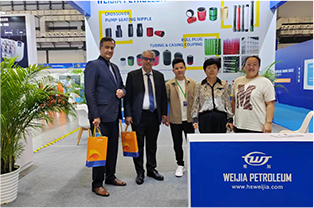- Afrikaans
- Albanian
- Amharic
- Arabic
- Armenian
- Azerbaijani
- Basque
- Belarusian
- Bengali
- Bosnian
- Bulgarian
- Catalan
- Cebuano
- Corsican
- Croatian
- Czech
- Danish
- Dutch
- English
- Esperanto
- Estonian
- Finnish
- French
- Frisian
- Galician
- Georgian
- German
- Greek
- Gujarati
- Haitian Creole
- hausa
- hawaiian
- Hebrew
- Hindi
- Miao
- Hungarian
- Icelandic
- igbo
- Indonesian
- irish
- Italian
- Japanese
- Javanese
- Kannada
- kazakh
- Khmer
- Rwandese
- Korean
- Kurdish
- Kyrgyz
- Lao
- Latin
- Latvian
- Lithuanian
- Luxembourgish
- Macedonian
- Malgashi
- Malay
- Malayalam
- Maltese
- Maori
- Marathi
- Mongolian
- Myanmar
- Nepali
- Norwegian
- Norwegian
- Occitan
- Pashto
- Persian
- Polish
- Portuguese
- Punjabi
- Romanian
- Russian
- Samoan
- Scottish Gaelic
- Serbian
- Sesotho
- Shona
- Sindhi
- Sinhala
- Slovak
- Slovenian
- Somali
- Spanish
- Sundanese
- Swahili
- Swedish
- Tagalog
- Tajik
- Tamil
- Tatar
- Telugu
- Thai
- Turkish
- Turkmen
- Ukrainian
- Urdu
- Uighur
- Uzbek
- Vietnamese
- Welsh
- Bantu
- Yiddish
- Yoruba
- Zulu
Tubing and Casing Solutions for Oil and Gas Industry
Tubing and Casing in Oil and Gas Production
In the oil and gas industry, the extraction of hydrocarbons from underground reservoirs involves sophisticated technologies and methodologies
. Among these, tubing and casing play critical roles in ensuring safe and efficient operations. Both components are vital for maintaining the structural integrity of the wellbore, controlling pressure, and preventing contaminants from entering the reservoir.Casing is the steel pipe that is installed in the well after it has been drilled. Its primary purpose is to stabilize the wellbore and isolate the oil and gas from other geological formations. Casing comes in various sizes and types, tailored according to the specific geological and operational conditions. The process of casing involves running sections of the pipe into the well and cementing them in place. This cementing process is crucial as it provides support and prevents the fluids from migrating between formations, thus ensuring safety and environmental protection.
One of the key features of casing is its ability to withstand substantial pressure fluctuations. During drilling, the well can encounter high-pressure zones that need to be effectively managed to prevent blowouts. Therefore, casing must be designed to endure these pressures, which is why materials used in casing construction have to meet stringent industry standards.
tubing and casing

After casing is installed, tubing is inserted into the well. Tubing is a smaller diameter pipe that is used to transport hydrocarbons from the reservoir to the surface. Since tubing is often subjected to dynamic pressures and varying temperatures as fluids are pumped through it, it is designed to be both flexible and robust. The material used for tubing typically includes carbon steel or specialized alloys to resist corrosion and wear.
Two separate functions of casing and tubing are crucial for the smooth operation of a well. While casing provides structural stability and isolation, tubing acts as a conduit for production. This separation ensures that the well can handle different forms of pressure and flow dynamics efficiently. Additionally, the ability to easily remove and replace tubing during maintenance operations enhances the operational life of the well.
Another important aspect of tubing and casing is their role in enhanced oil recovery (EOR) methods. In EOR, additional techniques, such as water flooding or gas injection, may require modifications or expansions of the tubing and casing systems to accommodate increased pressure and altered flow characteristics.
In conclusion, tubing and casing are foundational elements in oil and gas production. Their design and implementation have significant implications for the efficiency, safety, and environmental stewardship of extraction processes. As technology continues to advance, innovations in materials and installation methods promise to enhance the performance of these vital components, contributing to a more sustainable approach in the energy sector.
-
Well Casing Extension Couplings – Applications and InstallationNewsJun.06,2025
-
Types of Crossover Subs in Drilling & CompletionNewsJun.06,2025
-
Key Features of High-Quality Tubing Pup JointsNewsJun.06,2025
-
Installation and Maintenance Tips for Steel Couplings for PipeNewsJun.06,2025
-
How to Select the Right Pup Joint for Oil & Gas OperationsNewsJun.06,2025
-
Applications of Stainless Steel Pipe CouplingsNewsJun.06,2025







